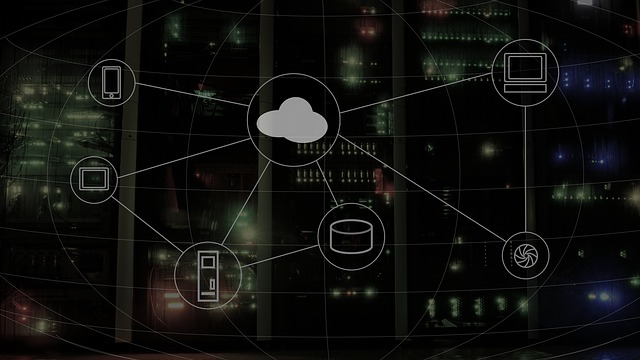Making the switch to cloud computing can have numerous benefits, but it’s not for everyone. This article provides an overview of why some scenarios may call for a different approach and gives you access to more comprehensive information on how Cloud computing works if needed. From networks and servers all the way down to applications and services, pay-as-you use convenience is one hallmark feature that makes this option so attractive – however there are times where traditional storage solutions might be better choices depending on your needs!
Cloud companies – These are the top 3 cloud providers:
AWS:
AWS, or Amazon Web Services, provides businesses of all sizes with customizable cloud computing platforms—allowing them to pay for only the services they need. From processing power and storage solutions to machine learning tools and even IoT capabilities, AWS offers a wide range of options so companies can tailor their applications to fit their specific needs. With various deployment, administration and monitoring features available as well; it’s no wonder why this highly versatile platform is one of today’s top choices in cloud-based technology.

Microsoft Azure:
Microsoft Azure is revolutionizing cloud-based applications with its impressive network of global data centers, enabling developers to build and deploy their creations like never before. Now the platform provides even more powerful technology for tackling tasks such as machine learning, analytics, and harnessing the Internet of Things.

GCP:
Companies looking to tap into the power of Google’s data management, analytics and more can benefit from choosing the Google Cloud Platform (GCP). With its suite of services including machine learning capabilities, GCP offers a comprehensive range for application deployment/administering and monitoring. Though Azure is highly popular among Microsoft users, AWS stands out as it provides an expansive choice of cloud solutions primed for any type business needs.

To maximize the potential of data-driven success, businesses should explore Google Cloud Platform (GCP). GCP offers comprehensive solutions to manage and analyze information essential for any organization’s goals. Ultimately, every business has unique demands that must be addressed in order to choose the ideal technology vendor.
Some of the benefits of cloud services:

Flexibility:
Organizations may scale their computing capabilities up or down as needed with cloud computing services without buying extra hardware.
Savings:
Since businesses only pay for the resources they use while using the cloud solution, they can spend less upfront. Additionally, it might do away with the requirement for internal IT personnel and the accompanying expenses.

Efficiency gain:
Organizations can access and use computing resources on demand using cloud computing without supporting and maintaining the underlying infrastructure.
Enhanced Collaboration:
Collaboration among team members can be improved thanks to cloud computing, allowing everyone access to shared resources from anywhere.
Enhanced disaster recovery:
Organizations may store business data and apps in the cloud thanks to cloud vendors, which makes it simpler to recover from catastrophes like fires, floods, or hardware failures.
These advantages have led many businesses to use a cloud provider to boost productivity, save costs, and increase agility. By 2024, 83% of enterprise workloads, according to a report by the Cloud Security Alliance, will be in the cloud.
Potential drawbacks of cloud solutions:
While cloud computing offers many benefits, there are also potential drawbacks to consider:
Dependence on internet connectivity:
Organizations that put their trust in cloud computing may experience a lapse of productivity if internet connectivity is lost. This could have serious implications for firms whose business operations depend on access to the cloud, making it imperative to maintain reliable online connections at all times.
Security concerns:

In a world where cyber-attacks are all too common, data storage in the cloud can leave organizations vulnerable to potential breaches. As risk of compromised security increases, companies may find that their on-premises infrastructure is better equipped with adequate measures for prevention and protection than those offered by large providers. Unfortunately, major incidents involving cloud service providers have already taken place – leaving businesses at an even higher risk when it comes to protecting confidential data from malicious actors.
Limited control over hardware and software:
With cloud computing, an organization may not have the same control over the hardware and software used as it would with on-premises infrastructure. This can be an issue for organizations with specific requirements or needing to customize their hardware and software.
Potential for vendor lock-in:
Switching from one cloud service provider to another can be complex and costly. This can create a sense of vendor lock-in, where an organization feels stuck with a particular cloud service provider even if it is not completely satisfied with the service.
Cost issues:

Cloud computing can be cost effective and time saving, but organizations should ensure they are making the right decision by fully evaluating all potential costs associated with cloud technology. Organizations must take into account hardware expenses, software fees, web connectivity charges—as well as ongoing maintenance support expenses — before investing in a long-term cloud solution so that it is an appropriate fit for their organization’s needs.
Who shouldn’t use cloud computing?
There is no one-size-fits-all answer to this question, as different organizations have different needs and requirements regarding IT infrastructure. However, there are certain situations in which an organization might want to consider alternatives to a cloud system:
Data security:
Suppose an organization has strict security requirements and is concerned about the potential for data breaches or security incidents involving a cloud service provider. In that case, it might consider on-premises infrastructure or a hybrid solution.
Control requirements:
Suppose an organization requires a high level of control over its hardware and software or needs to customize its IT environment to a significant extent. In that case, cloud computing may not be the best fit.
Internet connection reliability:
If an organization is located in an area with unreliable internet connectivity, cloud computing may not be a viable option, as it relies on a stable internet connection to function properly.
Switching vendors:
Suppose an organization has concerns about vendor lock-in and the potential cost and complexity of switching from one cloud service provider to another. In that case, it might consider alternatives such as on-premises infrastructure or a hybrid solution.
Limited budget:
Suppose an organization has a limited budget or resources and cannot afford the ongoing costs associated with cloud computing. In that case,g, it might want to consider other options, such as on-premises infrastructure.
When selecting a cloud computing solution, organizations should not rush the decision-making process. It is essential to consider their specific needs and objectives to ensure that this type of system will genuinely meet business demands in an effective manner.
Alternatives to cloud computing:
While cloud computing is a popular choice for many organizations, it may not be the best fit for every situation. There are several alternatives to cloud computing that organizations can consider:
On-premises infrastructure:

On-premises infrastructure refers to IT resources owned and managed by an organization and located on-site rather than being provided by a third-party service provider. Advantages of on-premises infrastructure include complete control over hardware and software and potentially lower costs. However, on-premises infrastructure requires an organization to manage and maintain the infrastructure, which can be time-consuming and costly.
Hybrid solutions:
Harnessing the power of both cloud computing and on-premises infrastructure, hybrid solutions offer organizations a dynamic way to optimize their IT environment. Making an informed decision about which option best suits specific needs and goals requires careful analysis of all pros, cons, budget constraints and other unique requirements associated with each solution. By exploring these options in detail, companies can efficiently tailor their digital landscape for maximum benefit.
Conclusion and final thoughts:
To make the right IT infrastructure decision for your organization, it is essential to thoroughly consider cloud computing and its potential drawbacks. Dependence on internet connectivity, security concerns, limited control over hardware and software configurations, vendor lock-in risks – all of these must be taken into account before deciding whether this type of delivery model fits your requirements. Alternatives such as on-premises or hybrid solutions may offer a more suitable solution depending upon an organizations specific needs and goals – so take the time to research each option’s advantages carefully in order to ensure you’re making the best possible choice for optimum value creation!
Every business is unique, so it stands to reason that each requires a tailored IT infrastructure approach. From conducting a thorough evaluation and analysis of an organization’s needs and goals, the most fitting solution can be identified – ensuring their tech fits like hand in glove with its specific requirements!
